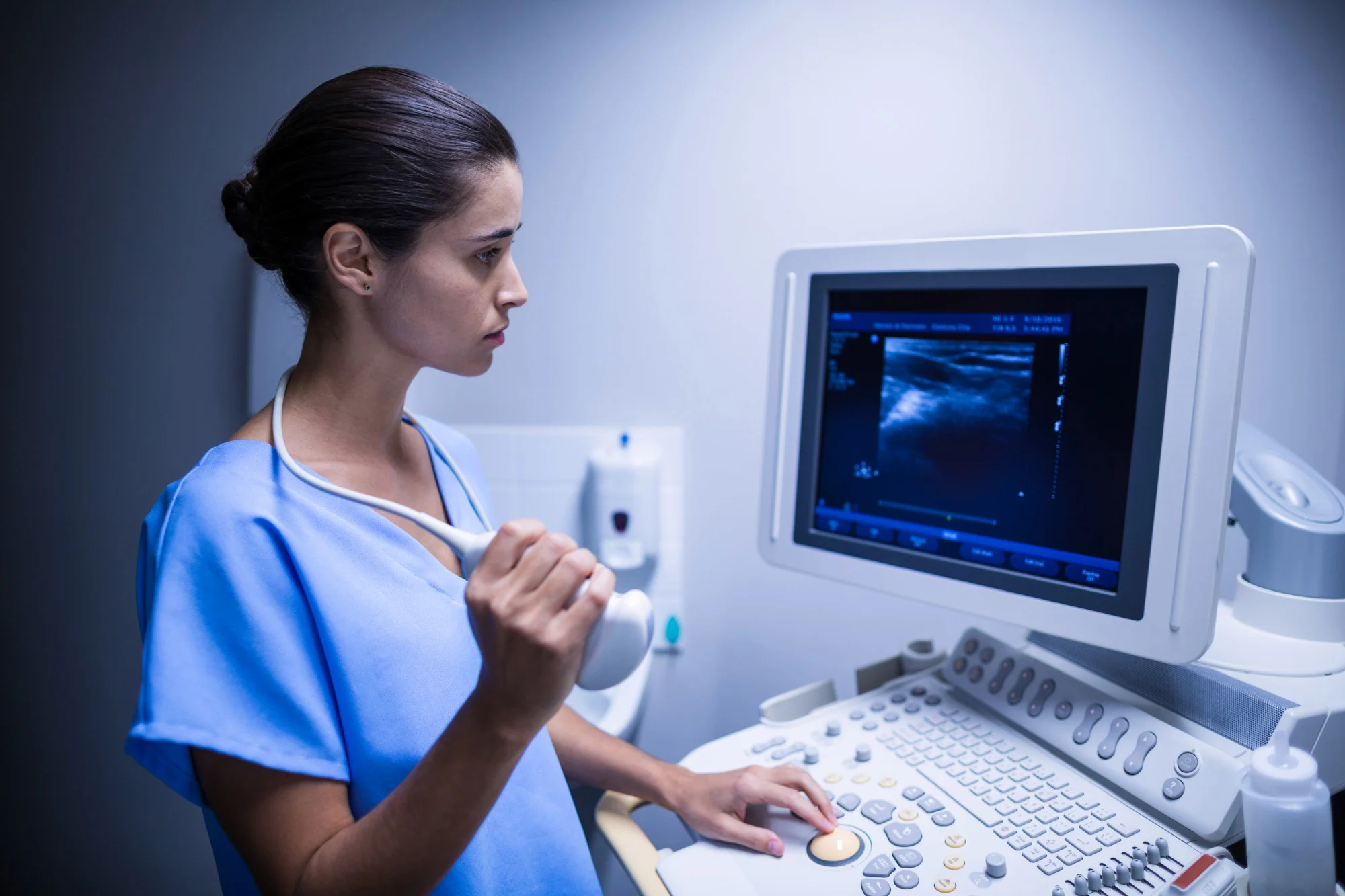Introduction
As medical research and technology continue to evolve, the quest for minimally invasive yet highly effective treatment strategies for cancer patients is at the forefront of gastrointestinal oncology. One such technique that has garnered significant attention over the past few years is endoscopic ultrasound-guided fiducial placement (EUS-FP), a cutting-edge procedure that enhances the precision of image-guided radiation therapy (IGRT) for patients with gastrointestinal malignancies. In the realm of this advancement, a pivotal article by Dr. Manoop S. Bhutani and Dr. Joseph M. Herman has shed light on its efficacy and implementation. The findings and implications discussed herein are based on their influential journal article published in ‘Gastroenterology & Hepatology (N Y)’ in March 2019.
Article Analysis – The EUS-FP Technique
Dr. Bhutani and Dr. Herman’s article, “Endoscopic Ultrasound-Guided Fiducial Placement for Gastrointestinal Malignancies,” provides a comprehensive overview of EUS-FP’s role in optimizing the delivery of radiation therapy for patients with gastrointestinal cancers. The article, published with the DOI: 10.4065/mayo-ojst.167-170, demonstrates how the placement of fiducials allows for unprecedented precision when targeting tumors, consequently sparing surrounding healthy tissue from high doses of radiation.
EUS-FP involves the insertion of small markers, known as fiducials, into or near the tumor. These markers are detectable on imaging modalities, thus serving as reference points to guide the delivery of focused radiation treatment. This technique is particularly beneficial for treating organ systems that are susceptible to movements, such as the gastrointestinal tract, as it enables the tracking of the tumor location in real time.
Clinical Implications and Success of EUS-FP
The accuracy provided by EUS-FP has substantial clinical implications. It potentially translates into improved local control of the tumor, better survival rates, and reduced treatment-related side effects. Bhutani and Herman’s article highlights the technical feasibility of this procedure, demonstrating its safety profile and advocating for its use as a standard practice in gastroenterological oncology.
In their discussion, the authors refer to several studies that have explored the benefits and challenges of EUS-FP. For instance, Adler (2017) observed the role of EUS-FP in clinical practice and asserted its growing utility. Coronel et al. (2018) conducted a systematic review and meta-analysis on EUS-guided fiducial placement, further affirming its clinical relevance (DOI: 10.1016/j.gie.2018.10.047). Another study by Dhadham et al. (2016), who explored the use of the technique without fluoroscopy, reported its safety and feasibility (PMC4798935).
DiMaio et al. (2010) elaborated on the use of a 22-gauge needle for fiducial placement, confirming that this method provides a significant advantage for patients by enabling precise delivery of IGRT (DOI: 10.1016/j.gie.2010.01.070). Furthermore, Khashab et al. (2012) conducted a comparative analysis of traditional and coiled fiducials, finding that different types of fiducials can be used depending on patient needs and tumor characteristics (PMC3578307). Ryou et al. (2014) introduced a novel exchangeable FNA system with preloaded needles, optimizing the ease and efficiency of the fiducial placement procedure.
The article by Bhutani and Herman is particularly significant as it emanates from their experience at The University of Texas MD Anderson Cancer Center, a renowned facility at the forefront of cancer research and treatment. The credibility and expertise of the authors lend substantial weight to the clinical recommendations and outcomes discussed in the article.
The Future of EUS-FP in Gastrointestinal Oncology
As EUS-FP continues to be fine-tuned, its applications are expected to extend beyond current implementations. The precision of IGRT has the potential to revolutionize the management of gastrointestinal malignancies, making treatments like stereotactic body radiation therapy even more effective and reducing the likelihood of recurrence.
Challenges and Considerations
Despite its merits, EUS-FP is not without challenges. The need for specialized training in endoscopic techniques, access to advanced equipment, and considerations related to the cost and availability of fiducials are aspects that need to be addressed as this procedure becomes more widespread.
Moreover, the multidisciplinary collaboration between gastroenterologists, oncologists, radiologists, and medical physicists is crucial for the successful integration of EUS-FP into the treatment algorithm. This collaboration ensures that every aspect of patient care, from diagnosis to treatment planning and execution, is meticulously coordinated for optimal outcomes.
Conclusion
The comprehensive analysis provided by Bhutani and Herman aids in solidifying the role of endoscopic ultrasound-guided fiducial placement as a transformative technique in the therapeutic repertoire against gastrointestinal malignancies. It underscores the importance of embracing minimally invasive procedures that can offer high-precision targeting of tumors, thereby enhancing the overall efficacy of radiation therapy.
Through continuous innovation and research, EUS-FP is set to become an integral part of the treatment paradigm for gastrointestinal cancers. As work in this field progresses, healthcare providers can anticipate a future where cancer therapies are more personalized, less invasive, and more successful in delivering enduring remission. The journey of medical technology is far from over, and endoscopic ultrasound-guided fiducial placement is a shining example of the progress that has been made and the potential that the future holds.
References
1. Bhutani, M. S., & Herman, J. M. (2019). Endoscopic Ultrasound-Guided Fiducial Placement for Gastrointestinal Malignancies. Gastroenterology & Hepatology, 15(3), 167-170. DOI: 10.4065/mayo-ojst.167-170
2. Adler, D. G. (2017). EUS-guided fiducial placement: role and use in clinical practice. Practical Gastroenterology, 41(11), 48–50.
3. Coronel, E., Cazacu, I. M., Sakuraba, A., et al. (2018). EUS-guided fiducial placement for GI malignancies: a systematic review and meta-analysis. Gastrointestinal Endoscopy. DOI: 10.1016/j.gie.2018.10.047
4. Dhadham, G. C., Hoffe, S., Harris, C. L., & Klapman, J. B. (2016). Endoscopic ultrasound-guided fiducial marker placement for image-guided radiation therapy without fluoros-copy: safety and technical feasibility. Endoscopic International Open, 4(03), E378–E382. PMC4798935
5. DiMaio, C. J., Nagula, S., Goodman, K. A., et al. (2010). EUS-guided fiducial placement for image-guided radiation therapy in GI malignancies by using a 22-gauge needle (with videos). Gastrointestinal Endoscopy, 71(07), 1204–1210. DOI: 10.1016/j.gie.2010.01.070
Keywords
1. Endoscopic Ultrasound-Guided Fiducial Placement
2. Gastrointestinal Malignancies Treatment
3. Precision Radiation Therapy
4. Image-Guided Radiation Therapy (IGRT)
5. Minimally Invasive Cancer Procedures
